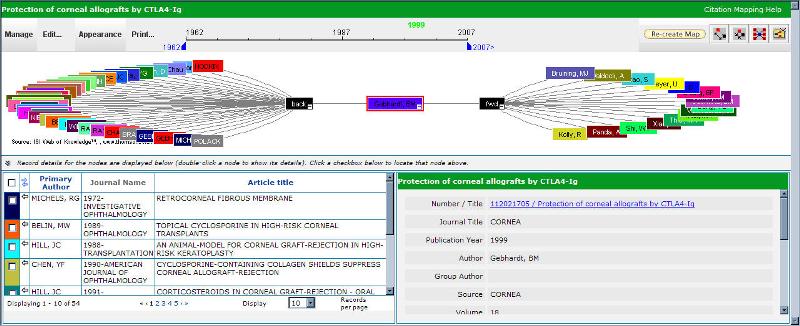If you’re like me, Monday mornings are the days you really want to celebrate Sleep Awareness. National Sleep Awareness Week is March 1-8, 2009: a public education, information, and awareness campaign that coincides with the return of Daylight Saving Time, the annual “springing forward” of clocks that can cause Americans to lose an hour of sleep from the NHLBI.
TOP 10 SLEEP MYTHS
from “Your guide to healthy sleep” PDF — National Heart, Lung, and Blood Institute – NIH Publication No. 06-5271 (November 2005). http://www.nhlbi.nih.gov/health/public/sleep/healthy_sleep.pdf
Myth 1: Sleep is a time when your body and brain shut down for rest and relaxation.
No evidence shows that any major organ (including the brain) or
regulatory system in the body shuts down during sleep. Some
physiological processes actually become more active while you
sleep. For example, secretion of certain hormones is boosted,
and activity of the pathways in the brain needed for learning and
memory is heightened.
Myth 2: Getting just 1 hour less sleep per night than needed will not have any effect on your daytime functioning.
This lack of sleep may not make you noticeably sleepy during
the day. But even slightly less sleep can affect your ability to
think properly and respond quickly, and it can compromise your
cardiovascular health and energy balance as well as the ability
to fight infections, particularly if lack of sleep continues. If you
consistently do not get enough sleep, eventually a sleep debt
builds up that will make you excessively tired during the day.
Myth 3: Your body adjusts quickly to different sleep schedules.
Your biological clock makes you most alert during the daytime
and most drowsy at night. Thus, even if you work the night
shift, you will naturally feel sleepy when nighttime comes. Most
people can reset their biological clock, but only by appropriately
timed cues?óÔé¼ÔÇØand even then, by 1?óÔé¼ÔÇ£2 hours per day at best.
Consequently, it can take more than a week to adjust to a
dramatically altered sleep/wake cycle, such as you encounter
when traveling across several time zones or switching from
working the day shift to the night shift.
Myth 4: People need less sleep as they get older.
Older people don?óÔé¼Ôäót need less sleep, but they often get less sleep
or find their sleep less refreshing. That?óÔé¼Ôäós because as
people age, they spend less time in the deep, restful stages of
sleep and are more easily awakened. Older people are also
more likely to have insomnia or other medical conditions that
disrupt their sleep.
Myth 5: Extra sleep at night can cure you of problems with excessive daytime fatigue.
Not only is the quantity of sleep important but also the quality
of sleep. Some people sleep 8 or 9 hours a night but don?óÔé¼Ôäót feel
well rested when they wake up because the quality of their sleep
is poor. A number of sleep disorders and other medical conditions
affect the quality of sleep. Sleeping more won?óÔé¼Ôäót
alleviate the daytime sleepiness these disorders or conditions
cause. However, many of these disorders or conditions can be
treated effectively with changes in behavior or with medical therapies.
Myth 6: You can make up for lost sleep during the week by sleeping more on the weekends.
Although this sleeping pattern will help relieve part of a sleep
debt, it will not completely make up for the lack of sleep. This
pattern also will not make up for impaired performance during
the week because of not sleeping enough. Furthermore, sleeping
later on the weekends can affect your biological clock so that
it is much harder to go to sleep at the right time on Sunday
nights and get up early on Monday mornings.
Myth 7: Naps are a waste of time.
Although naps do not substitute for a good night?óÔé¼Ôäós sleep, they can
be restorative and help counter some of the impaired
performance that results from not getting enough sleep at night.
Naps can actually help you learn how to do certain tasks quicker.
But avoid taking naps later than 3 p.m., as late naps can interfere
with your ability to fall asleep at night. Also, limit your naps to no
longer than 1 hour because longer naps will make it harder to
wake up and get back in the swing of things. If you take
frequent naps during the day, you may have a sleep disorder
that should be treated.
Myth 8: Snoring is a normal part of sleep.
Snoring during sleep is common, particularly as a person gets
older. Evidence is growing that snoring on a regular basis can
make you sleepy during the day and more susceptible to diabetes
and heart disease. In addition, some studies link frequent snoring
to problem behavior and poorer school achievement in
children. Loud, frequent snoring can also be a sign of sleep
apnea, a serious sleep disorder that should be treated.
Myth 9: Children who don?óÔé¼Ôäót get enough sleep at night will show signs of sleepiness during the day.
Unlike adults, children who don?óÔé¼Ôäót get enough sleep at night
typically become more active than normal during the day.
They also show difficulty paying attention and behaving properly.
Consequently, they may be misdiagnosed as having attentiondeficit
hyperactivity.
Myth 10: The main cause of insomnia is worry.
Although worry or stress can cause a short bout of insomnia, a
persistent inability to fall asleep or stay asleep at night can be
caused by a number of other factors. Certain medications and
sleep disorders can keep you up at night. Other common
causes of insomnia are depression, anxiety disorders, and
asthma, arthritis, or other medical conditions with symptoms that
become more troublesome at night. Some people who have
chronic insomnia also appear to be more revved up than
normal, so it is harder for them to fall asleep.

 myLSUHSC
myLSUHSC

